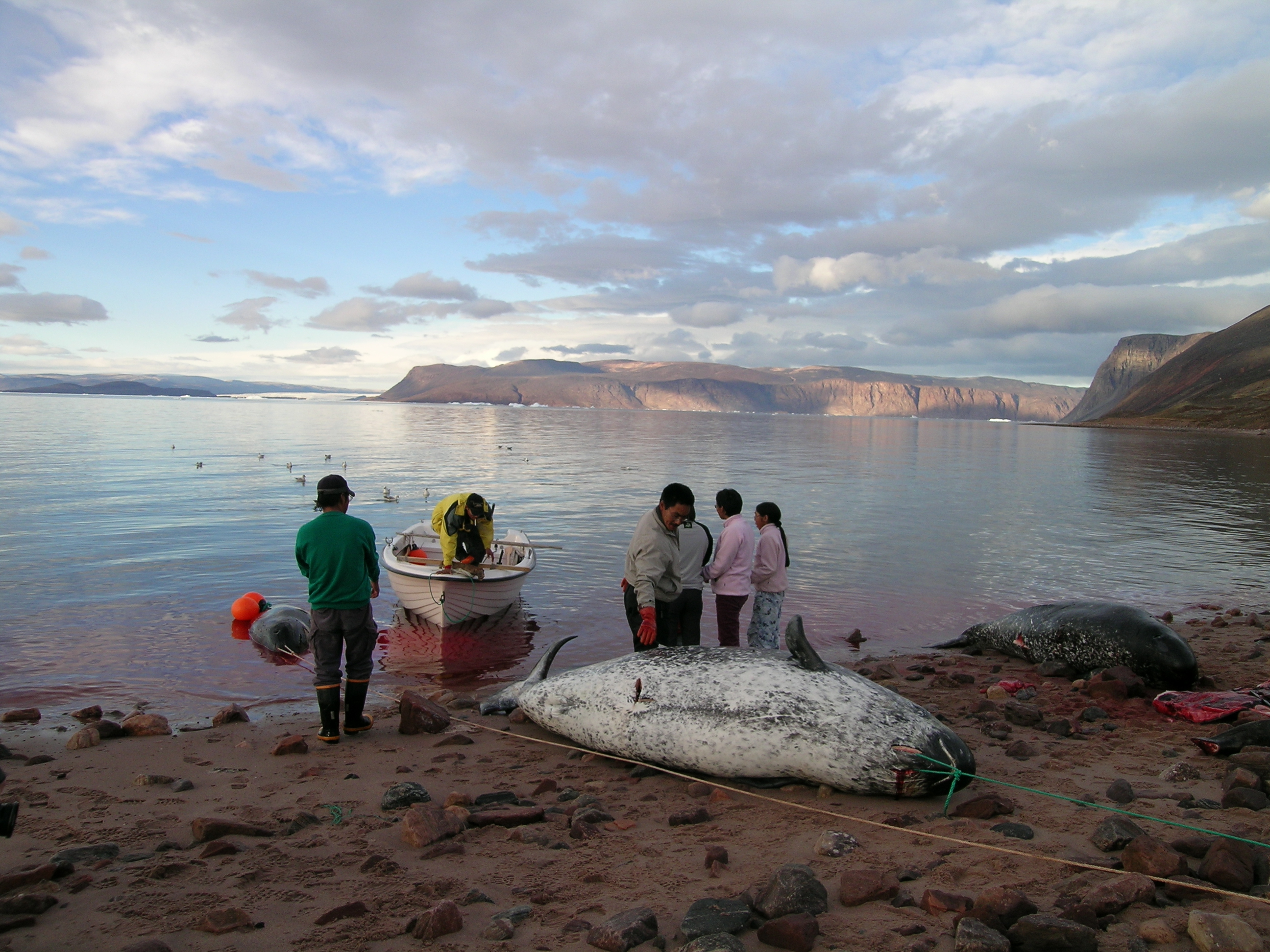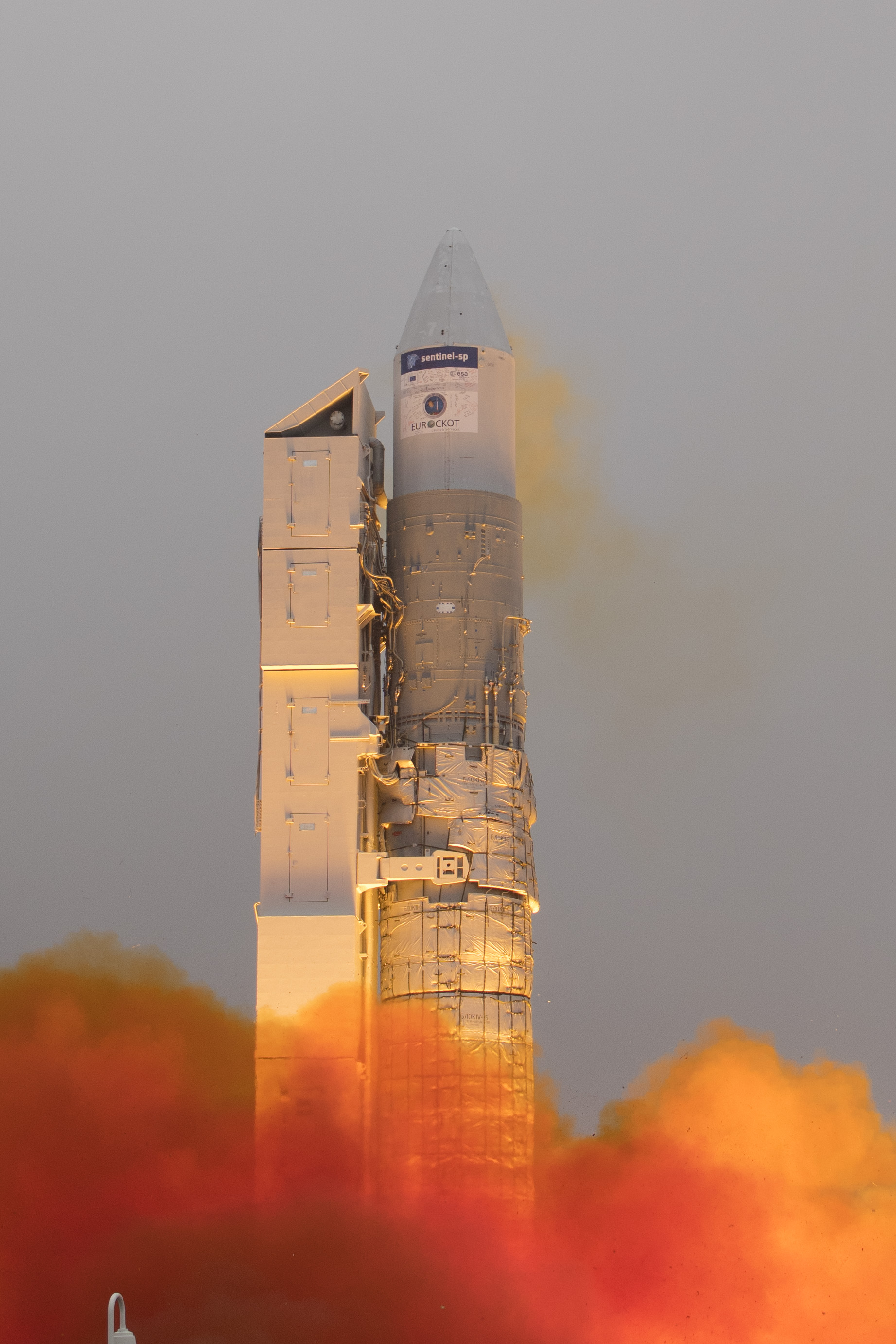How debris from rockets launched far away is a risk to Inuit food security

When the European Space Agency (ESA) launched a satellite into orbit on Oct. 13, it did so despite opposition from Inuit leaders in Canada and Greenland over its potential to contaminate an important Arctic area.
Most, but not all, of the rocket’s highly toxic fuel is burned during the launch. So, when the second stage of the rocket detached and fell back to Earth, it may have contained up to a tonne of unburned hydrazine fuel that was “deliberately deposited” into the North Water Polynya in northern Baffin Bay, between Nunavut and Greenland.
The polynya, or Pikialasorsuaq in Inuktitut, is an area of open water surrounded by sea ice. It is a critical habitat for Arctic species such as narwhal and seals, and is one of the Arctic’s most biologically productive areas. It is also considered to be an important part of the food supply for the Inuit communities who fish and hunt there.
[Toxic fuel from Russian rockets in Arctic waters raises environmental and legal issues]
Prior to the launch, the former Prime Minister of Greenland, Kuupik Kleist, called the deposit of potentially dangerous rocket fuel into the Pikialasorsuaq “unacceptable.”
According to a study published earlier this month, at least 10 similar launches have discarded rocket stages in Pikialasorsuaq or in the Barents Sea, off the northern coasts of Norway and Russia, since 2002.
Article 29 of the UN Declaration on the Rights of Indigenous Peoples asserts that states must ensure hazardous materials are not disposed in Indigenous territories without their consent. However, last week’s launch — like the others before it — involved no prior consultation with Inuit.
For Inuit, the rocket launch transcends geopolitics. It strains their ongoing concerns over food safety and food security. It also raises tensions over the rights of Indigenous peoples in contemporary Canada, including their right to food.
In Nunavut, food security remains a serious public health issue. More than two-thirds of Inuit households lack reliable access to enough affordable, nutritious food. Climate change, environmental contaminants, high food prices and low income all
affect food security.
The average cost of healthy foods in Nunavut is considerably more than the average in Canada, including chicken ($13.54 vs. $7.17 per kilogram), apples ($6.70 vs. $3.85 per kilogram) and carrots ($5.93 vs. $2.03 per kilogram). Meanwhile, employment income in small Nunavut communities such as Arctic Bay is less than half the median income of $32,800 that is the norm across Canada.
What if something goes wrong?
Hydrazine is an extremely toxic chemical now rarely used by space programs due to its immediate dangers. Researchers know little about how humans may be affected by long-term exposure to hydrazine, nor have they studied its behaviour in Arctic marine environments.
Hydrazine was used in last week’s ESA atmosphere-monitoring satellite launch from Plesetsk Cosmodrome in Russia. The ESA has denied the rocket stage presents any threat to the Arctic environment and Global Affairs Canada deemed risks to the marine environment as “very low.”
Yet Micheal Byers, Canada research chair in global politics and international law at the University of British Columbia, has highlighted that no information currently exists on how much unused hydrazine actually hits the water.

In theory, debris from the rocket will burn up on re-entry into the Earth’s atmosphere and never reach the surface. But what if something goes wrong?
The Government of Nunavut has said the likelihood of fuel reaching the Earth remains low. But there should be no risk at all. The Inuit Circumpolar Council (ICC) has demanded that space agencies use less toxic alternatives.
When governments evaluate risk, they must evaluate the probability of an event and its potential consequences. History shows they could do better.
When Nunavut Justice Susan Cooper struck down the Eastern Canadian Arctic Seismic Experiment in August 2010, she acknowledged these consequences. Inuit communities feared irreparable harm to the animals vital to their food system if the experiment went ahead. In her decision, Justice Cooper wrote that while only the “potential for harm” was established by the Qikiqtani Inuit Association, such potential was sufficient to grant an injunction due to the degree of harm, which equated to a “loss of culture… no amount of money” could compensate.
As Inuit have repeatedly pointed out, any risk associated with the Arctic environment may have an impact on their food security, nutrition and health, as well as on their livelihood and culture. To what extent have the potential harms to Inuit food systems been taken into account when governments evaluate the risks associated with falling rocket debris or other industrial activities?
‘This is our home’
Even though much of the Arctic is far removed from the world’s industrial centres, global pollution is having a profound effect on the North. Contaminants can travel long distances along ocean currents, rivers and streams, and in the atmosphere, reaching high levels in Arctic ecosystems.
Inuit generally prefer to eat food obtained through fishing, hunting and gathering, collectively called country foods. It is mostly through these country foods that Inuit are exposed to environmental contaminants such as persistent organic pollutants and heavy metals such as mercury. Studies show that Inuit living in Nunavut have higher levels of contaminants in their blood than the general Canadian population.
Contaminants are among many contemporary pressures on Inuit food systems.
In July 2017, the Nunavut hamlet of Clyde River won a bid against the National Energy Board (NEB) in the Supreme Court of Canada to halt a seismic survey in Baffin Bay. The hamlet’s lawyer argued that the potential impacts of the seismic survey on food security, which had been dismissed by industry representatives and the NEB as minimal, were a central concern.
“Hunting and gathering, this is how we live. This is our humanity,” said Jerry Natanine, the former mayor of Clyde River. These mounting pressures on marine ecosystems highlight how country foods are an existential matter for Inuit.
Inuit food systems can no longer simply be an afterthought to international sovereignty disputes and risk assessment. Indigenous Peoples in Canada and globally have drawn attention to the false imagination of their homes, lands and waters as a terra nullius – an empty no-man’s land.
As Okalik Eegeesiak, former chair of the ICC, has said of previous launches: “This rocket will not be falling into no-man’s land… This is our home.”
Tiff-Annie Kenny, Nereus Program Fellow; Postdoctoral Fellow, University of Ottawa and Tad Lemieux, PhD researcher in sovereignty and rhetoric, Carleton University
This article was originally published on The Conversation. Read the original article.